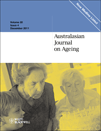Hospital admissions from residential aged care facilities to a major public hospital in South Australia (1999–2005)
Conflict of interest: None to declare.
Abstract
Aim: To describe admissions patterns of residential aged care facility (RACF) residents admitted to a major public hospital.
Design, setting: Retrospective longitudinal study linking hospital admissions and the Department of Health and Ageing RACF provider data from July 1999 to June 2005.
Participants: All permanent residents of aged care facilities in South Australia admitted to a single public hospital.
Main outcome measures: Description of primary diagnoses and trends.
Results: There were 3310 admissions from 147 RACFs across South Australia. The most frequent primary diagnoses were fractured femur/pelvis, pneumonia and ischaemic heart disease. Two diagnoses increased significantly with an 11% annual increase for infections and a 5% increase for femur fractures.
Conclusion: Admissions from RACFs to a major South Australian public hospital are increasing primarily because of admissions for femur fractures and infections in high care. These conditions could be targeted for interventions to reduce hospital admissions.




